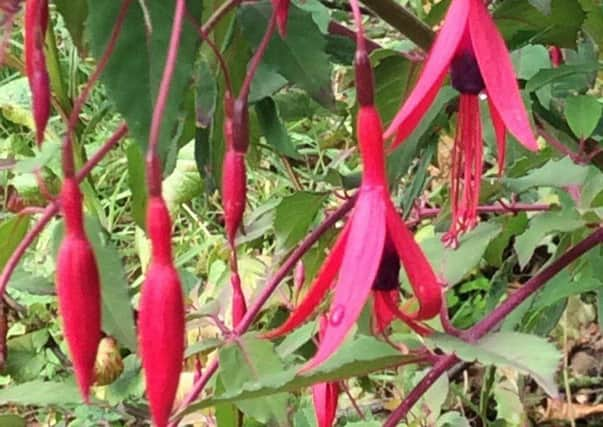Turn your attention to the borders


The sweetheart rose (Cecile Brunner) has grown from a metre to well over two since spring growth began and is still flowering. It only survived recent strong winds because nearby shrubs filtered the blast.
Now we have two choices; reduce it by half immediately to avoid wind-rock, or bend the long stems over in a loop and tie them to a cane.
Advertisement
Hide AdAdvertisement
Hide AdWhen this is practised with apples it’s called ‘festooning’ and is to encourage flower-fruit buds along the arch. It has a similar effect when applied to roses.
Tall shrubs with soft top growth, such as buddleja and lavatera, need pruning to half their height now. Reducing them closer to soil level should come after winter has had its say.
Hardy herbaceous perennials that have finished performing are pruned to ground level, and this is so satisfying as it feels like reclaiming lost acres of space.
In practical terms, you can see which plants are becoming dominant and need to be moved or divided into smaller sections. This process starts now and continues until the point of spring, weather permitting.
Advertisement
Hide AdAdvertisement
Hide AdSpring bulb shoots are appearing throughout our borders so treading carefully is the order of the day whenever heavy digging is on the cards.
First to flower is the yellow aconite (February), closely followed by snowdrops, dwarf narcissi and irises.
During the intervening four months, they will possibly be accompanied by frost and snow, but none will falter because they have adapted to such conditions.
You’d think we would all have enough bulbs in our gardens by now, but there’s always something new that appeals to us when we see them on display.
Advertisement
Hide AdAdvertisement
Hide AdPlanting time is upon us and the question always asked is ‘How deep do I place them?’ The rule of thumb is to look at the distance from tip to base of any bulb, double it, and you have the distance its tip must be below the surface when planted.
We’re clearing the vegetable beds and discovering that plants such as sweet corn have developed such a root system that each is having to be dug out, rather than pulled. Courgette plants were also firmly rooted. Runner beans, after giving their all, were brought to ground with a thud last week.
None of this growth is wasted, rather chopped up and added to the composting process. You’d think there’d be less to handle, given the dry summer we’ve just experienced, but gardening’s never as simple as that.